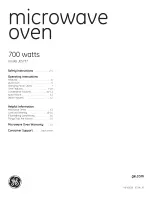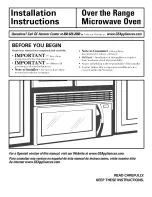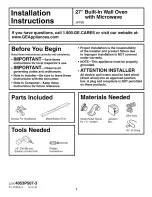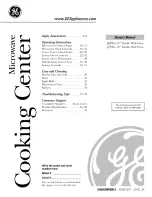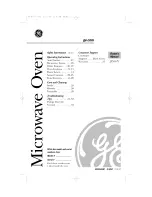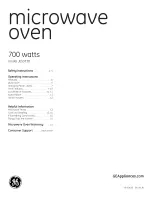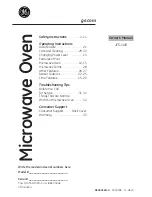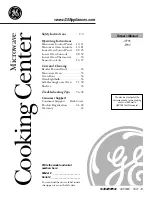
55
Roasting table
The roasting time and temperature depend on the size, height,
type and quality of the item.
As a general rule: the larger the item, the lower the temperature
and the longer the roasting time.
The information in the table is a guideline, and relates to items
cooked without a lid. The values may vary depending on the
type and quantity of the meat/fish and on the roasting dish.
You should set the lower of the specified temperatures the first
time. This will generally allow more even browning.
At the end of the roasting time, switch the oven off and leave
the roast to rest for approximately 10 minutes in the cooking
compartment with the door closed. The recommended rest time
is not included in the given roasting times.
The information in the table is for food placed in a cold oven
and for meat/fish taken directly from the refrigerator.
Tips and tricks
Grilling
Caution!
Material damage due to effect of heat: The temperature
generated in the cooking compartment is very high. Keep the
appliance door closed when using the grill. Never grill with the
appliance door open.
Always use the wire rack and the universal pan when grilling.
You can purchase the universal pan as an accessory at
specialist retailers (see section: Accessories). Slide the wire
rack into the shelf position that is specified in the grilling table.
To prevent it from becoming dirty, insert the universal pan one
level lower. Always place the food to be grilled in the centre of
the wire rack.
Note:
Always use the universal pan in the standard position
(not the other way up).
If you are grilling more than one piece of meat, make sure that
they are the same sort of meat and that they are of similar
thickness and weight.
3D hot air
›
Top/bottom heating
%
Food for roasting
Shelf posi-
tion
Tempera-
ture in °C
Roasting time in
minutes
Shelf posi-
tion
Tempera-
ture in °C
Meat loaf (made from 500 g meat)
1
170 - 180
60 - 70
1
200 - 210
Fish, whole (300 g)
1
160 - 170
20 - 30
1
190 - 210
Fish, whole (700 g)
1
160 - 170
30 - 40
1
180 - 200
Pork
Fillet, medium (400 g)
1
170 - 180
30 - 45
2
200 - 230
Joint with rind (1.5 kg)
1
160 - 170
100 - 130
1
200 - 220
Joint, marbled, without rind, e.g. neck (1.5 kg)
1
160 - 170
120 - 150
1
190 - 210
Joint, lean (1 kg)
1
170 - 180
70 - 90
1
180 - 200
Smoke-cured pork
1
160 - 170
60 - 70
1
190 - 210
Beef
Fillet, medium (1 kg)
1
180 - 190
45 - 65
1
200 - 220
Sirloin, medium (1.5 kg)
1
180 - 190
30 - 45
1
200 - 220
Pot roast (1.5 kg)*
1
170 - 180
120 - 150
1
200 - 220
Veal
Joint/breast of veal (1.5 kg)
1
160 - 170
90 - 120
1
180 - 200
Knuckle
1
160 - 170
100 - 130
1
190 - 210
Poultry (not stuffed)
Chicken, whole (1 kg)
1
170 - 180
60 - 70
1
200 - 220
Duck, whole (2 - 3 kg)
1
150 - 160
90 - 120
1
190 - 210
Goose, whole (3 - 4 kg)
1
150 - 160
130 - 180
1
180 - 200
* Roast pot roasts with the lid on
Crust too thick and/or roast too dry
Check the shelf height. Reduce temperature or roasting time.
Crust too thin
Increase the temperature or switch on the grill briefly at the end of the roasting time.
The meat is not cooked right through
Remove any accessories that are not required from the cooking compartment. Increase
the roasting time. Check the core temperature of the roast using a meat thermometer.
Steam in the cooking compartment is
condensing on the appliance door
The steam dries during the course of the cooking. If there is an excessive volume of
steam, you can carefully open the door briefly to dissipate the steam more quickly.

























